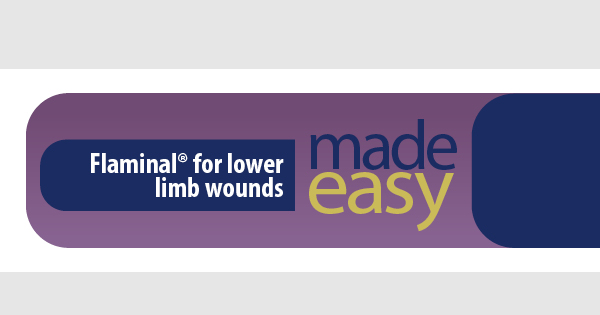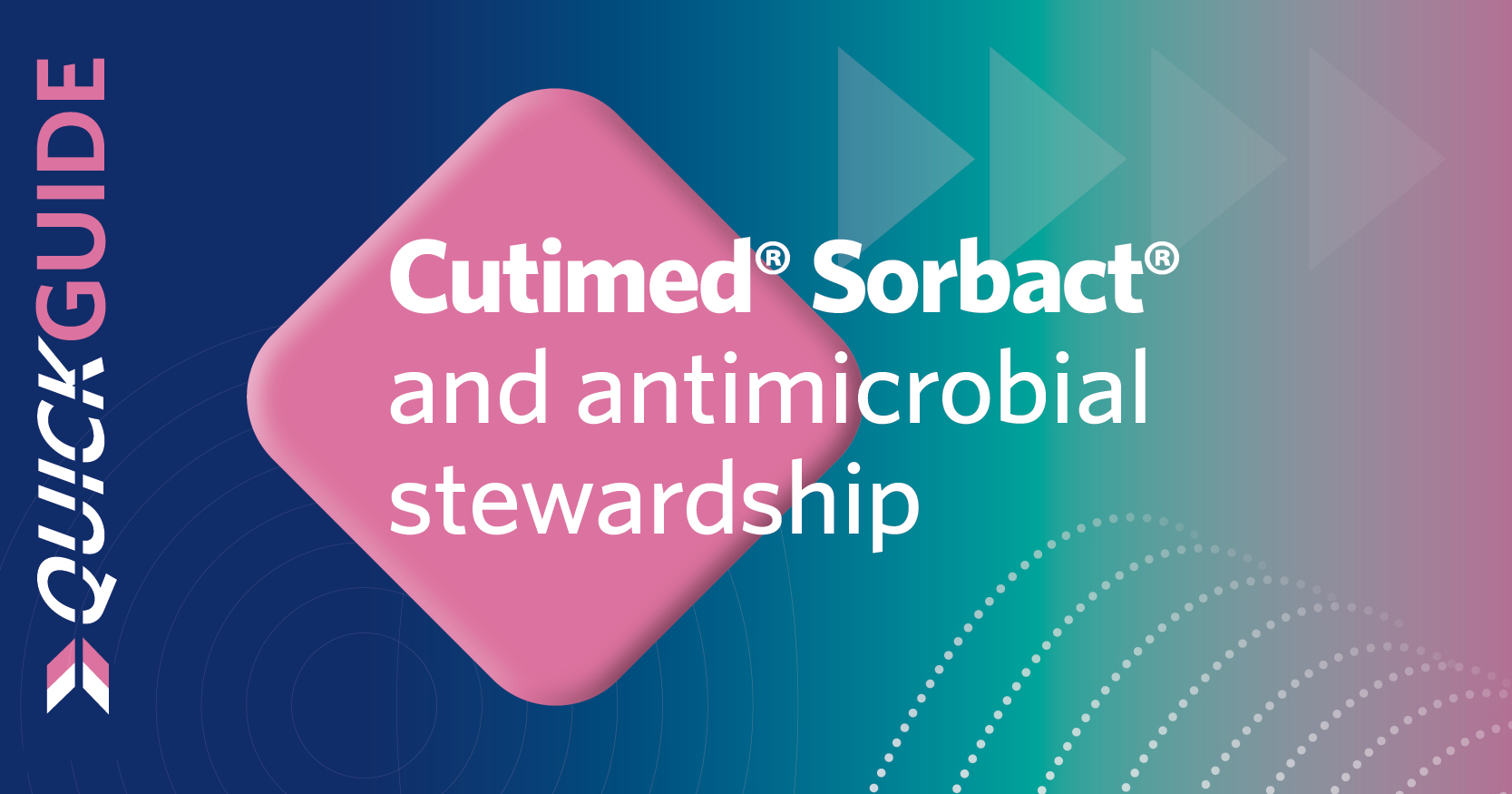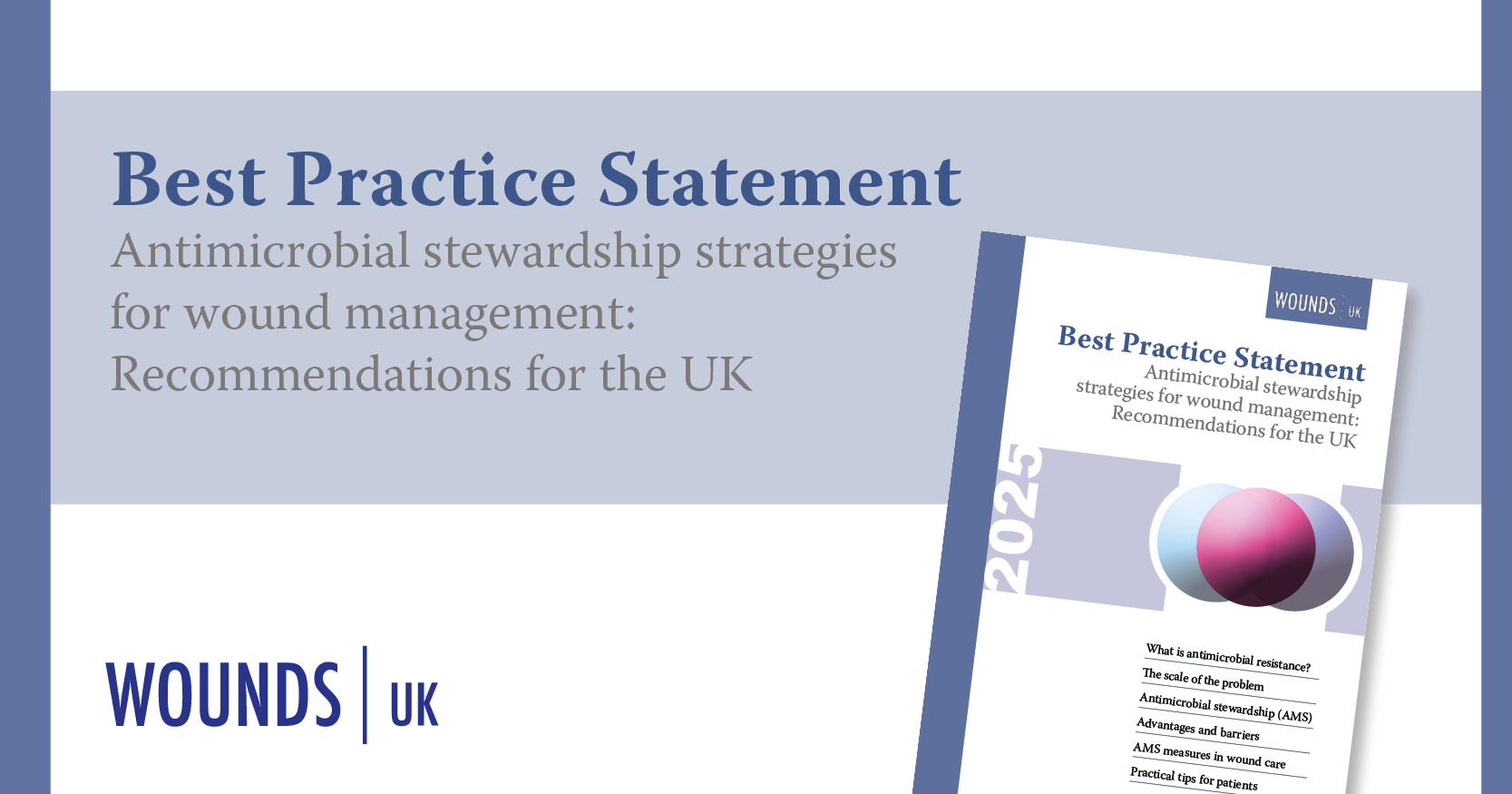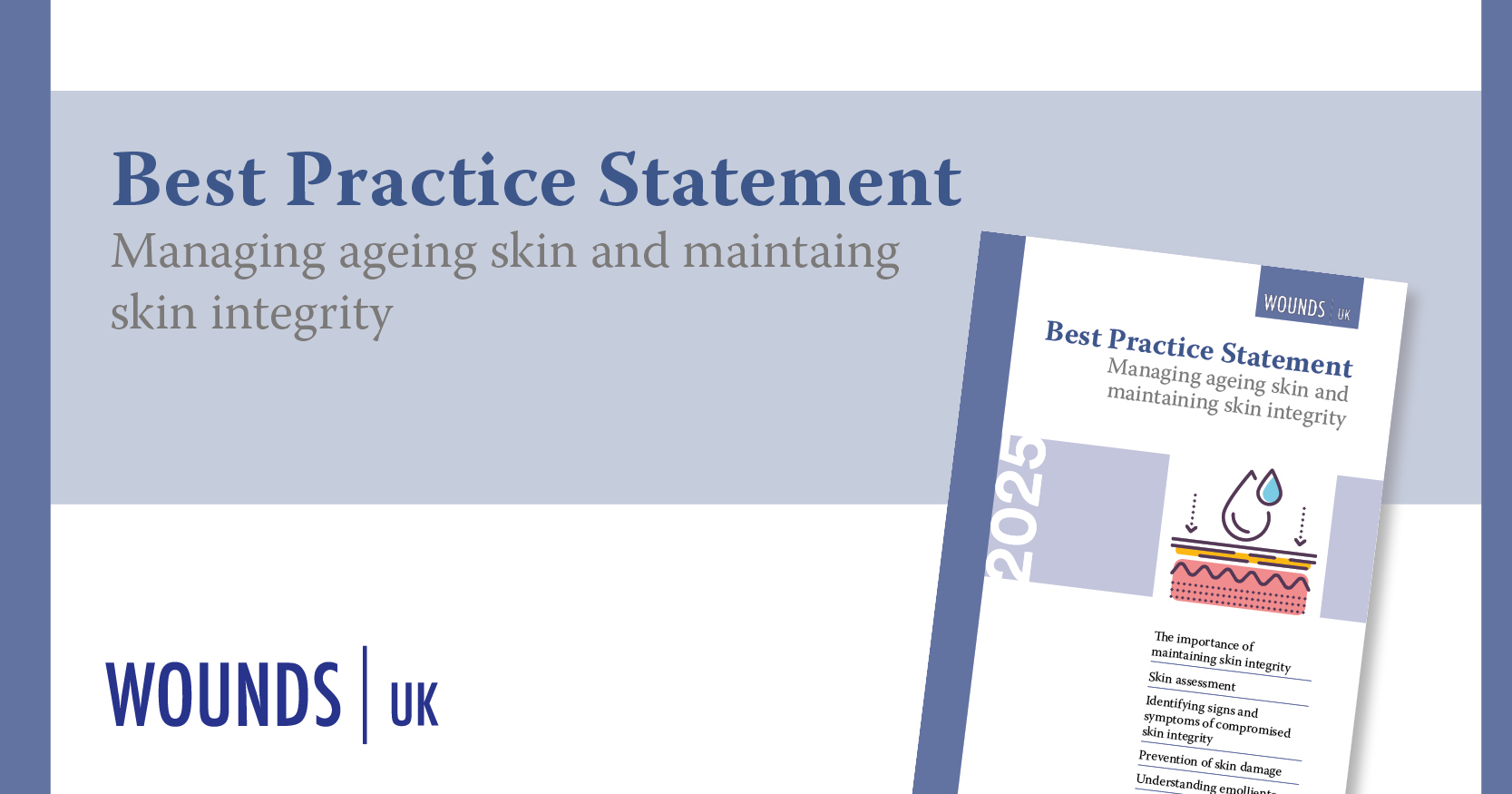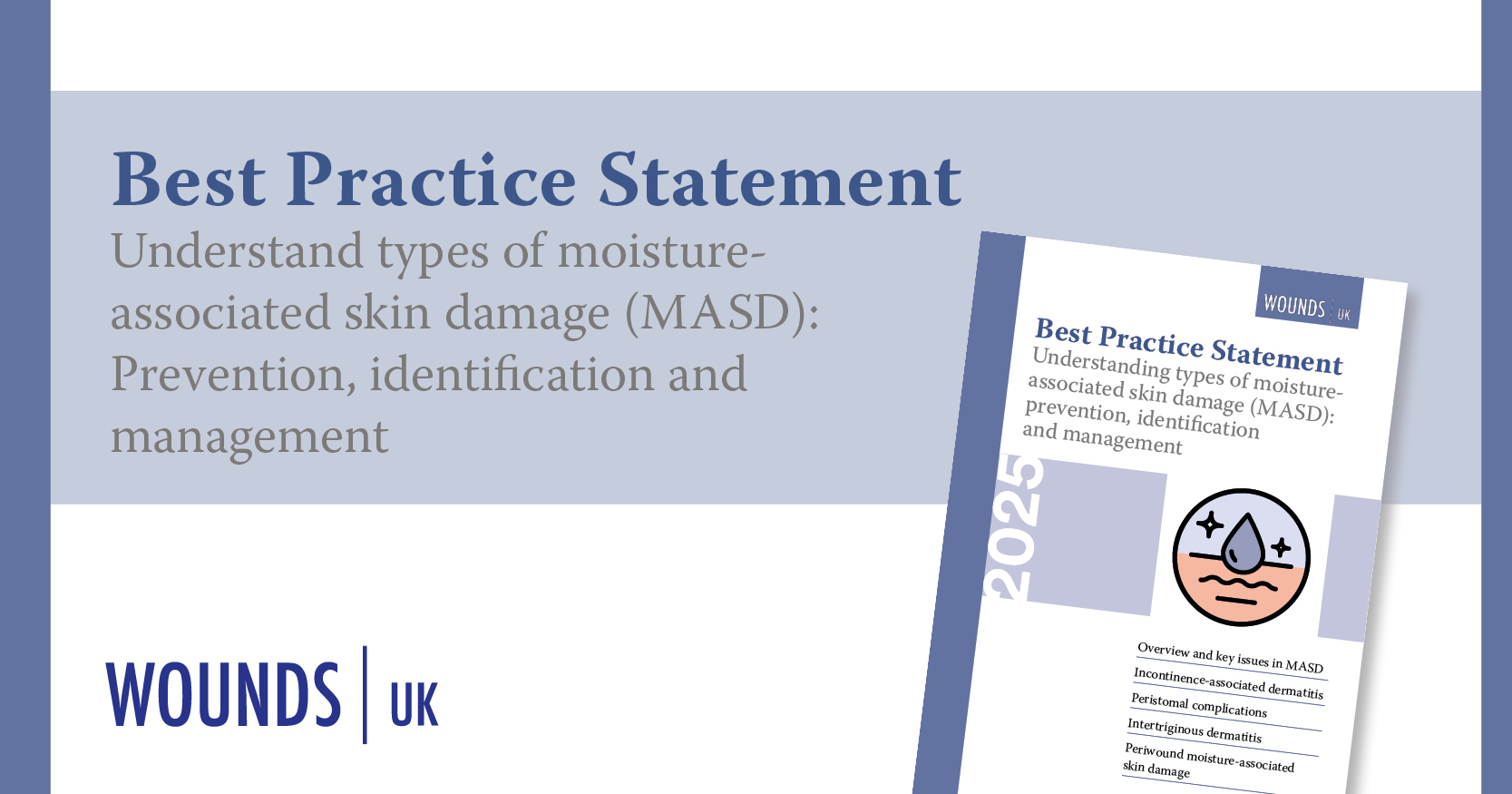Importance of recognising and treating infections in lower limb wounds
Leg ulcers are ulcers on the lower leg (originating on or above the malleolus and below the knee) that have not healed within two weeks (National Institute for Health and Care Excellence [NICE], 2013); however, a foot ulcer originates below the malleolus. In England alone, there are an estimated 739,000 leg ulcers, with associated healthcare costs estimated at £3.1 billion per year, placing a significant burden on NHS services (Guest et al, 2020).
Between 2017 and 2020, 7,957 major amputations were performed in England in people with diabetes due to lower limb wounds, with diabetic ulceration and amputation costing ~£1 billion per year. Post-amputation mortality for these patients surpasses that of most cancers (NHS Resolution, 2022). Tragically, many diabetes-related lower limb amputations can be prevented with suitable prevention and care (NHS Resolution, 2022).
It’s important to note that not all wounds become infected. The symbiotic relationship between the host and the colonising microorganism may vary, and wound infection occurs when microorganisms increase in number, overcome the hosts’ immune responses and invade soft tissue (IWII, 2022; Figure 1).
Distinguishing between inflammation and infection
While infection and inflammation may share some overlapping clinical features, careful assessment of signs, symptoms, timing, wound appearance, microbiological analysis, response to treatment and clinical judgement can help differentiate between the two conditions and guide appropriate management strategies. Infected wounds may require antimicrobial therapy (e.g. antibiotics or antifungals) to eradicate the causative pathogens and resolve the infection, while inflamed wounds may respond to conservative measures such as wound cleansing, debridement and topical therapies aimed at reducing inflammation and promoting healing (Signore, 2013).
Bacterial vs fungal wound infections
Bacteria (both aerobic and anaerobic) are the major cause of wound infections, followed by fungi and viruses. Typically, the first colonising organisms are skin organisms from the surrounding wound area. Staphylococcus aureus, the most common bacterial pathogen, is often isolated in local infections due to its ability to colonise and produce virulence factors that allow its invasion (Edwards-Jones, 2016). Pseudomonas aeruginosa tends to be isolated later in the infection process and can be easily identified by clinicians because of the green pigment it produces during proliferation. Other common bacterial pathogens include streptococci (groups A, B, C, D and G) and Enterobacteriaceae (including Escherichia coli, Acinetobacter sp., Klebsiella sp.). Candida albicans, a yeast/fungus is less frequently isolated.
Note: The Gram stain is the most important staining process used in diagnostic microbiology. Gram-positive bacteria have a thick cell wall (peptidoglycan), while Gram-negative bacteria have a thinner cell wall and an outer membrane (lipopolysaccharide – endotoxin).
Importance of accurate diagnosis in fighting AMR
Clinical diagnosis of wound infection can be confirmed through haematological, radiological and microbiological investigations (Dissemond et al, 2020). However, analysing chronic wounds is more complicated as the surface layers often contain biofilm or aggregates of biofilm, which is often a mixture of microorganisms (James et al, 2008; Malone et al, 2017). Therefore, a specimen for culture should be obtained after cleaning and debridement.
Swabbing chronic wounds to accurately diagnose infection doesn’t always yield satisfactory outcomes, as the presence of multiple species of bacteria and/or fungi in the biofilm can easily mask any clear pathogen. Consequently, a different approach to diagnosis and treatment is needed, especially with the rise of AMR seen in common wound pathogens (Puca et al, 2021; Malone and Schultz, 2022). New point-of-care tests/tools, such as the Therapeutic Index for Local Infection (TILI) score (Dissemond et al, 2020), are essential for diagnosis, while treatment strategies should be guided by an antimicrobial stewardship (AMS) approach, which includes infection prevention and avoiding the misuse or overuse of antimicrobials (Wounds UK, 2020).
Early intervention and judicious use of antiseptic/antimicrobial dressings and topical ointments can form part of an AMS-informed approach, by managing infection locally and using antiseptic agents over systemic antibiotics wherever possible (IWII, 2022).
Barriers to healing in infected wounds
Up to 80% of chronic wounds may contain biofilm, causing delayed wound healing. Wound biofilm can contain a mixture of pathogens and non-pathogens, making accurate diagnosis and treatment challenging (Malone et al, 2017). Moreover, the protective matrix of biofilm can prevent access of the antimicrobial agent to the organisms held within the biofilm, increasing microbial tolerance (Percival et al, 2015). Complicating matters further, multiple microorganism species are frequently present (Bowler, 2018).
Importance of wound debridement
Regular wound cleansing actively removes loose debris and surface contaminants and should be undertaken regularly. For chronic/hard-to-heal wounds, vigorous cleansing and debridement are recommended to disrupt biofilm (IWII, 2022). Disrupting slough and devitalised non-viable tissue is essential for promoting wound healing, reducing the risk of infection and complications, enhancing the efficacy of topical treatments, facilitating wound assessment and improving patient comfort (Kalan et al, 2023).
The chosen debridement method needs to be suitable for the individual patient; for example, in cases where vascular structures are compromised and there is a heightened risk of bleeding, any form of debridement should be gentle (IWII, 2022).
Effects of excess exudate and the importance of its management
Excess exudate can have detrimental effects on wound healing, increase the risk of complications, compromise patient comfort and impede the effectiveness of wound management strategies. Therefore, it’s important to manage exudate effectively to promote wound healing, prevent complications, enhance patient comfort and facilitate accurate wound assessment. By implementing appropriate strategies to control exudate levels, clinicians can optimise the wound healing process and improve outcomes for patients with acute and chronic wounds (World Union of Wound Healing Societies [WUWHS], 2019).
Strategies for reducing bioburden
Wound biofilms can be found in slough, debris and other tissues and even within dressings (Kirketerp-Møller et al, 2020). Removing biofilm, either entirely or partially through cleaning and debridement, can lead to a reduction in organism numbers or the ‘bioburden’. Debriding, followed by the use of topical, non-cytotoxic antimicrobial agents, can facilitate wound healing progression.
AMS in wounds and topical therapies
Several studies suggest an overuse of systemic antibiotics in people with non-healing wounds, with little evidence of clinical benefit (World Health Organization, 2019; Edwards-Jones, 2020). AMS initiatives can optimise antibiotic prescribing and reduce inappropriate antimicrobial use, adverse events (e.g. toxicity resistance) and the economic burden. If there are no clinical signs and symptoms of wound infection, there is no requirement to use topical antimicrobial agents or wound dressings, unless for prevention (e.g. in at-risk wounds or at-risk patients).
Topical antiseptics and wound dressings containing silver, iodine and polyhexamethylene biguanide (PHMB) exhibit effective antibacterial action across a broad range of wound pathogens, supported by a growing body of evidence. There are a number of non-medicated wound dressings (NMWDs) that work by removing bioburden from a wound bed through a chemical interaction between the dressing and the microorganism. These NMWDs are extremely useful for preventing infections in high-risk wounds and include hydrogels, hydrocolloids, hydro-responsive wound dressings, DACC-coated dressings, super-absorbents, carboxymethylcellulose dressings and chitosan (IWII, 2022). Additionally, products that contain naturally occurring enzymes such as enzyme alginogels that form free radicals, which oxidise thiol groups in proteins and cause breaks in DNA, are also extremely useful at preventing infections (Gottrup et al, 2013).
Introduction to Flaminal®
Flaminal® is an innovative primary wound dressing with no cytotoxicity or associated adverse risks. It is an ‘enzyme alginogel’, containing alginate to manage exudate levels, a GLG — glucose oxidase/lactoperoxidase enzyme system, and a physical gel formulation that aids autolytic debridement (White, 2006). These naturally occurring enzymes, found in milk and secretions of exocrine glands (e.g. saliva, tears and cervical mucus), exhibit a broad spectrum of antimicrobial activity in vitro by creating free oxygen radicals that target various bacterial and fungal species (see Box 1). Additionally, the peroxidase system creates a broad set of oxidants, targeting multiple types of bacteria and possessing multiple targets within bacterial cells, thereby reducing the likelihood of resistance formation (Tonoyan et al, 2020).
Flaminal® effectiveness in addressing multiple barriers to healing
Flaminal® simultaneously breaks multiple barriers to healing due to its unique formulation, which includes a debriding gel, absorbent alginate and antimicrobial enzyme system. It is particularly suitable for leg and foot ulcers due to several key features (Cooper, 2013; Wounds UK, 2023):
- Autolytic debridement: Debriding gel in Flaminal® effectively removes and disrupts slough, devitalised non-viable and necrotic tissue, promoting a cleaner wound bed
- Debris and bacteria absorption: Flaminal® contains absorbent alginate and macrogol to absorb debris, bacteria and excess exudate while maintaining a moist wound environment
- Exudate management: Available in two formulations (Hydro and Forte) with differing alginate content, Flaminal® allows for a step-up and step-down approach to managing exudate levels. This promotes an optimal moisture balance in the wound bed crucial for cell proliferation and migration
- Reduction of biofilm-released bacteria: Flaminal® reduces bacteria released from biofilms commonly found in chronic wounds like leg and foot ulcers
- Ease of application: Its gel formulation makes Flaminal® easy to apply and conform to irregular wound shapes
- Antimicrobial protection with no cytotoxicity: Flaminal® selectively kills a broad range of bacteria and fungi absorbed into the gel matrix and not on the wound bed, preserving essential skin and tissue without cytotoxicity
- Compatibility with compression bandaging systems: Flaminal® can be used under compression bandaging systems commonly used for leg ulcers, making it convenient for clinicians and patients.
“In fact, resistance has emerged towards every antibiotic class introduced to date. The antibiotic resistance crisis spurred global efforts to develop antibacterial alternatives. Naturally occurring peroxidase-catalysed systems are among the potential candidates.” (Tonoyan et al, 2020)
The benefit of using Flaminal® in relation to the absence of recorded AMR
One significant benefit of using Flaminal® in wound care is that, to date, there have been no reported instances of AMR in the Flaminal® GLG enzyme system (Gottrup et al, 2013; Flen Health, 2021). Flaminal® uses a unique enzyme-based technology that does not rely on antibiotics or other antimicrobial substances, thus reducing the chances of AMR. This ensures that patients can continue to access viable treatment options for wound infections (Cooper, 2013). This makes Flaminal® a valuable component of AMS initiatives aimed at mitigating the global threat of AMR (Gottrup et al, 2013).
Case study
This case involves the management of a 49-year-old female patient with a large, deep diabetic foot ulcer, significantly impacting her quality of life to the extent that the wound had stopped her from going to work and socialising. Her past medical history included type 2 diabetes mellitus, peripheral vascular disease, hypertension, high cholesterol, osteoarthritis and a low platelet count (the wound was at a high risk of bleeding). At the initial assessment, the aim was to decolonise the wound bed, reduce malodour and minimise the risk of bleeding.
The wound underwent surgical debridement (Figure 2a), followed by the application of 10ml of Flaminal® Forte into the cavity using a syringe. An adhesive foam dressing was positioned over the wound, and the patient was advised to offload when in bed and to be non-weight bearing. Physiotherapy was initiated to support mobilisation, and a referral was made to the dietitian for a high-protein diet. Dressing changes were performed only when Flaminal® lost its gel structure, following manufacturer’s instructions (1 to 4 days, depending on the amount of exudate).
At the start of treatment, the wound exhibited primarily dark granulation tissue with some areas of slough. There were high levels of thick, malodourous amber exudate, and the wound edges were cliffed and non-advancing, with the periwound skin fragile and tender to the touch.
The use of Flaminal® after two (Figure 2b) and four weeks (Figure 2c) was shown to aid wound bed preparation by de-sloughing, de-colonising (the wound was no longer malodorous) and promoting healthy granulation tissue, without having to use multiple primary dressings. The treatment regimen of using Flaminal® was simple to apply and maintain and met local policy guidelines on AMS.
Conclusions
In summary, AMS is essential in wound care to prevent infections, minimise resistance, optimise treatment, reduce costs and promote patient safety.
Flaminal® provides a simple yet effective wound management system that aligns with the principles of AMS. Its ease of application, versatility, efficacy and compatibility make it a practical choice for healthcare professionals seeking optimal wound care solutions. By streamlining the wound care process, improving healing outcomes and enhancing patient comfort, Flaminal® proves to be a valuable tool in the arsenal of wound care practitioners.

